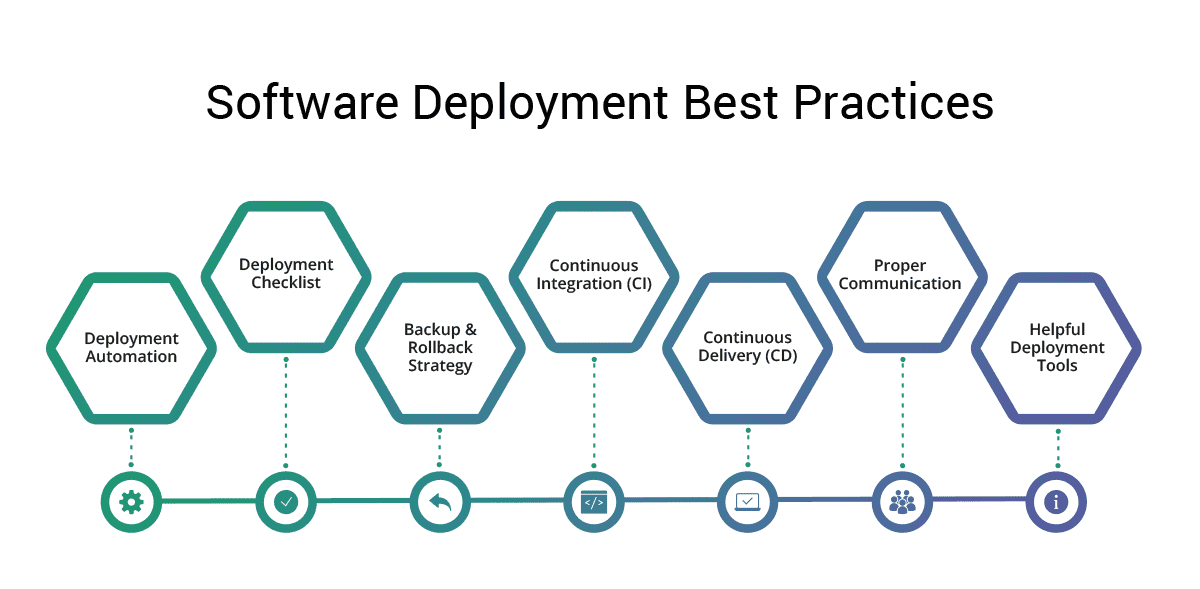Estimated reading time: 2 minutes, 30 seconds.
You’re done creating your application! But the fun isn’t over yet; now you need to plan out how you’re going to make your product available to your customers.
There are many cloud service providers to choose from, the largest of which being Amazon Web Services, Microsoft Azure, and Google Cloud Platform. There are also many smaller service providers that offer tailored services that might work better for those working on a budget.
Cloud-based services grant you access to a lot of modern services and different geographical regions. While local data centers might be cheaper, clouds are a better alternative when it comes to growing your business.

Deployment Best Practices
-
Have development and operations collaborate: DevOps is more than just a buzzword. Collaboration between these two departments is important for CI/CD, which improves performance and delivers constant updates to your users, which has become a consumer expectation in today’s digital ecosystem.
-
Test frequently: Did you test already? One more time! Make sure you’ve tested for all possible interactions (as many as you can think of) to ensure your product lives up to expectations.
-
Develop a release strategy: Decide how you want to proceed with deployment; are all features going out at once, or in pieces? Do users need to manually update on their side? Implementing parallel operations can reduce time and effort needed, and teams can develop an effective strategy.
-
Minimize changes and have a rollback plan: Multiple changes released at the same time can both cause issues and also make it difficult to discern the actual source of a problem. Also, have a rollback plan you can implement so you can return to a stable version.
-
Automate as much as possible: Another aspect of DevOps and CI/CD, creating an automated deployment pipeline reduces the likelihood of errors. It also creates a smooth path to deliver updates and upgrades on a regular basis.
-
Set metrics to monitor software performance: This helps you understand what implies efficiency and what areas could use improvement. Develop key performance indicators (KPIs) regarding CPU usage, page loading time, and similar areas that you can monitor at a surface level.
-
Communicate before deployment: Ensure that everyone is aware changes are coming, whether its internal teams or external users. If systems need to go offline for a certain amount of time, let all parties involved know. This gets in front of confusion, questions, and frustration.
-
Closely monitor after deployment: Using the previously established KPIs, check the performance of your website or application after updates or upgrades are applied. This will help to ascertain improvements or issues.
Take some time to create a solid, documented deployment plan. By creating a checklist, you can ensure that your deployment goes smoothly, and you have time to resolve any speed bumps along the way by anticipating issues before they occur.









